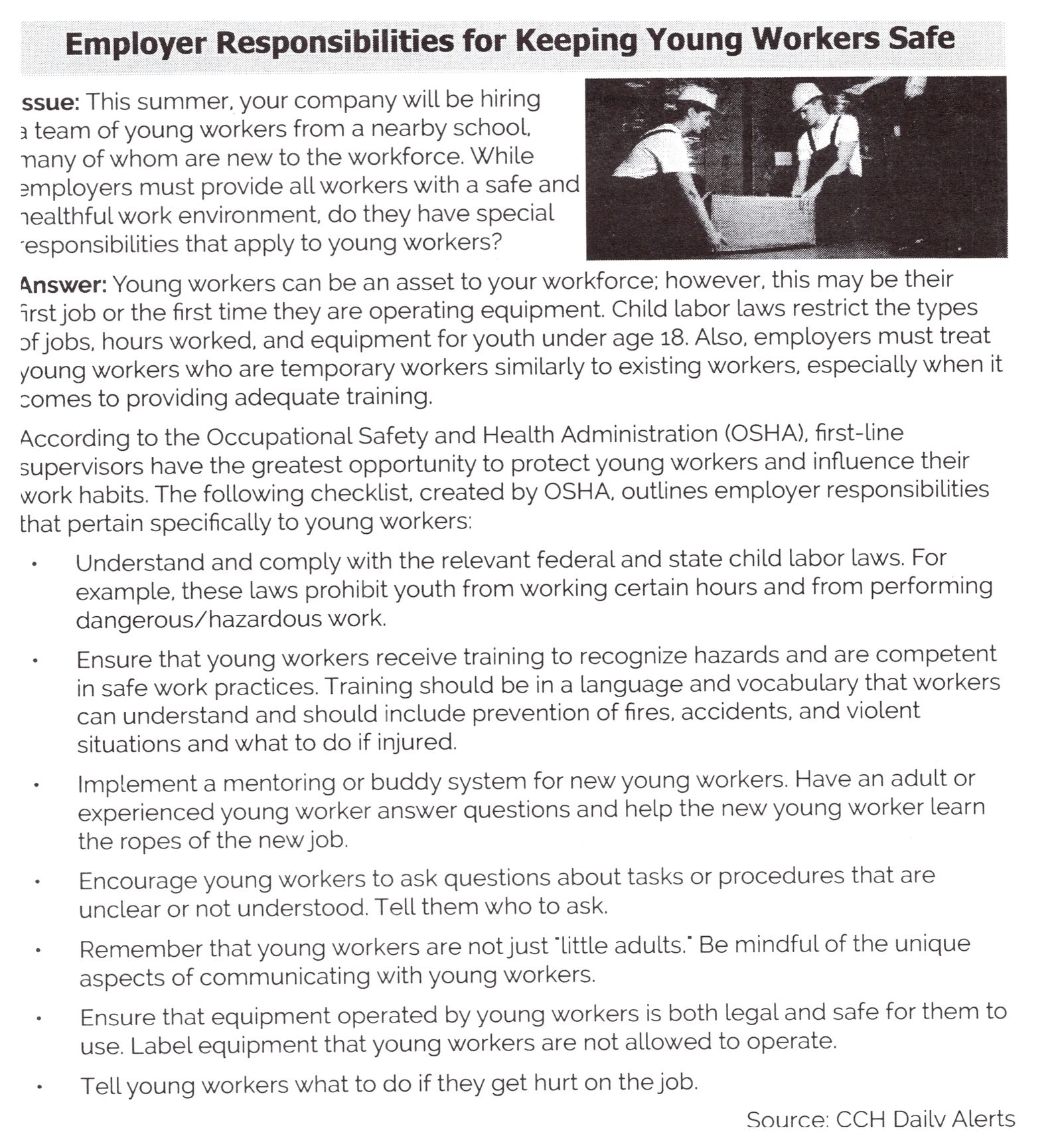
Keep Young Workers Safe
july 4, 2023– Michael Marsh
In business, there are consequences to every action. There are also consequences for inaction. For each action, inaction, statement, silence, notation, or lack of notation, there is a predictable consequence.
One area that I have been passionate about in the workers' compensation space is workplace safety. In particular, the statistics that we have developed handling 35,000 wc claims indicate two distinct, but manageable, trends.
The first tendency in the workers' compensation area for injuries and claims is with newly hired workers. New workers tend to be injured with a higher frequency than those with tenures longer than 12 months. We track this for our self-insured clients to help them identify opportunities for more effective onboarding and safety mindfulness.
For example, for one client in a heavy, physically demanding industry, we have seen a measurable increase in the percentage of claims by those with less than 12 months on the job. We make no illusions as to the causation of the trend. In their case, historically over 20 years have had 16.7 percent of all claims arise from injuries sustained by employees with less than one year of tenure. Since the start of the pandemic, that percentage has INCREASED to 19.8 percent. A 3 percent increase in claim frequency on a $5 million dollar program over the period is a lot of money spent on workers' compensation claims rather than invested in new machines and tools for doing their core mission work.
The second tendency is for injury of young workers. Workers with minimal or no prior job experience tend to sustain injuries at rates far higher than more seasoned workers. I have found the work done by British Columbia's workers' compensation division to be enlightening on many fronts. We in fact worked with the staff of WorkSafeBC when forming a similar Montana non-profit WorkSafeMT. The WorkSafeBC statistics on young worker frequency shown at https://www.worksafebc.com/en/health-safety/education-training-certification/young-new-worker/statistics provide a clear visual reference, particularly with age 25 and younger males, why we must do better at onboarding young workers.
The article below was included in the Associated Employers of Montana July newsletter. What a great move by AE to let their 500+ members hear about keeping young workers safe. Reinforcement of the concept of keeping our young people safe is a very good thing.

The bullet point checklist above is a good start for all employers. Tell young workers how to do their jobs safely, how to report questions or hazards that they see and what to do if they sustain an injury while working.
Takeaway: Hiring in the post-Covid times has been a challenge for many organizations. The investment in onboarding for safety training for young workers leads to huge positive returns by reducing injuries. When an injured human is not at work because of an injury, their assigned work must be handled by someone. Reducing injuries to these most vulnerable keeps them on the job, doing the work that they were hired to do. There are myriad social benefits for keeping these young folks on the job, uninjured.
